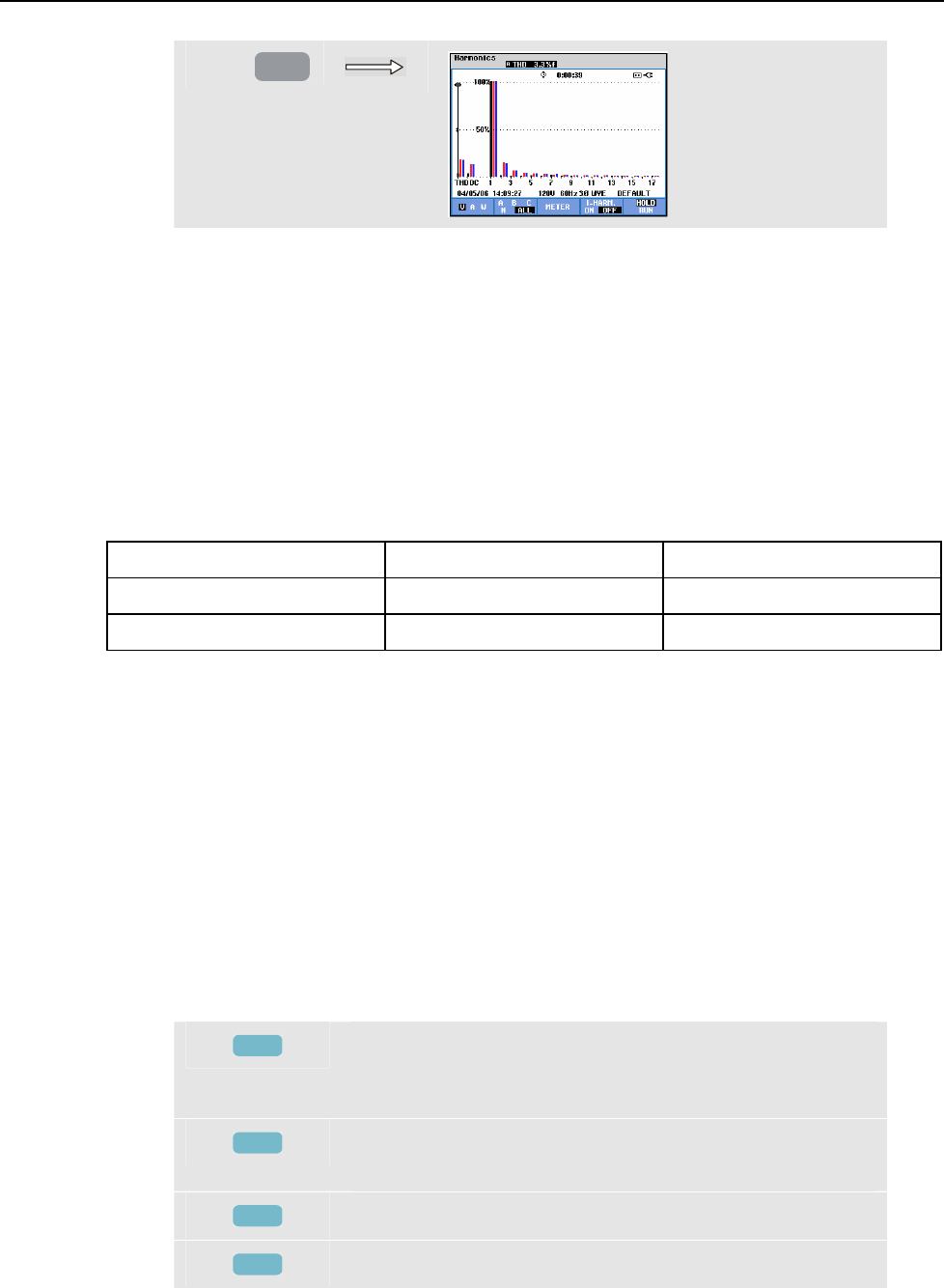
Fluke 434/435
Users Manual
10-2
e
ENTER
The Bar Graph display shows the percentage contribution of each of the components
related to the full signal. A signal without distortion should show a 1
st
harmonic (= the
fundamental) at 100 % while the others are at zero: in practice this will not occur because
there always is a certain amount of distortion resulting in higher harmonics.
A pure sinewave becomes distorted when higher frequency components are added to it.
Distortion is represented by the THD percentage. The display can also show the
percentage of the DC component and the K-factor. The K-factor is a number that
quantifies potential losses in transformers due to harmonic currents. Higher order
harmonics influence the K-factor more than low order harmonics.
The table below shows the number of Bar Graphs displayed simultaneously in one
screen:
Harmonics Harmonics & Interharmonics
All phase display 1 ... 12 1 ... 6
Single phase display 1 ... 50 1 ... 25
The left/right arrow keys are used to position the Cursor on a particular bar. The screen
header will show for that bar phase identifier, harmonic number, frequency, and phase
angle. If not all bars are shown on the screen, you can bring the next set within the
viewing area by moving the Cursor off the left or right end of the screen. The up/down
arrow keys are used for vertical zoom: 100 %, 50 %, 20 %, 10 %, or 5 % at full scale can
be selected. Using the SETUP key and function key F3 - FUNCTION PREF you can
choose harmonics display as a percentage of the fundamental voltage (%f) or the total of
harmonic voltages (%r). For detailed information see Chapter 20, FUNCTION
PREFerences.
Filtering. When measuring harmonics with interharmonics off, harmonics group is used
and a 1.5 s smoothing filter is active. When measuring harmonics with interharmonics on,
harmonics subgroup and interharmonics centered subgroup are used and no filter is
active.
Available function keys:
F1
Selection of harmonics type: Voltage, Current, or Real
Power (Watt). Power harmonics can have positive and
negative polarity.
F2
Selection of waveform set to be used: A (L1), B (L2), C
(L3), N (neutral) or ALL
F3
Access the Meter screen screen.
F4
Interharmonics display on/off.
